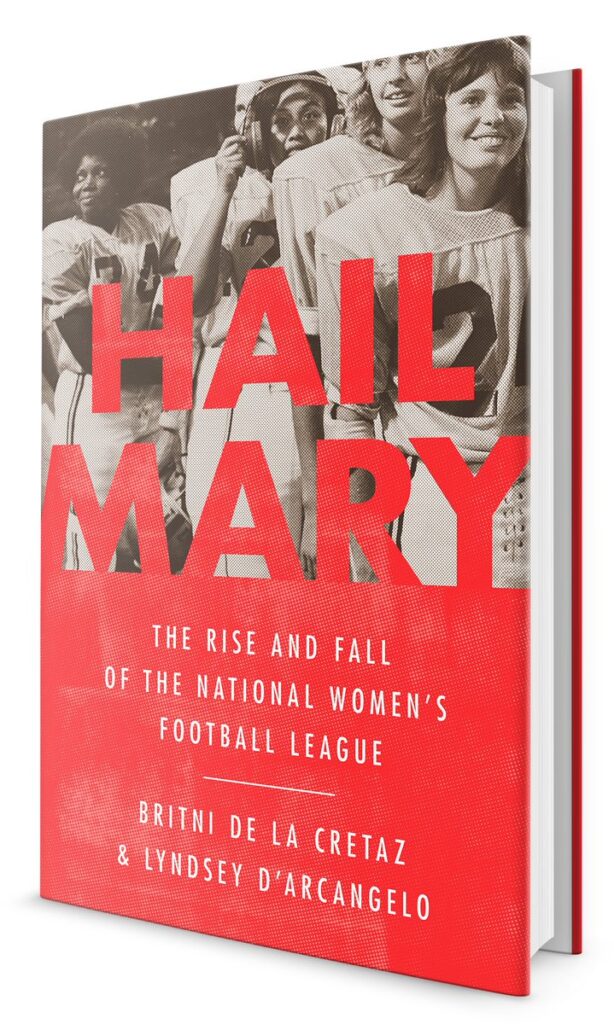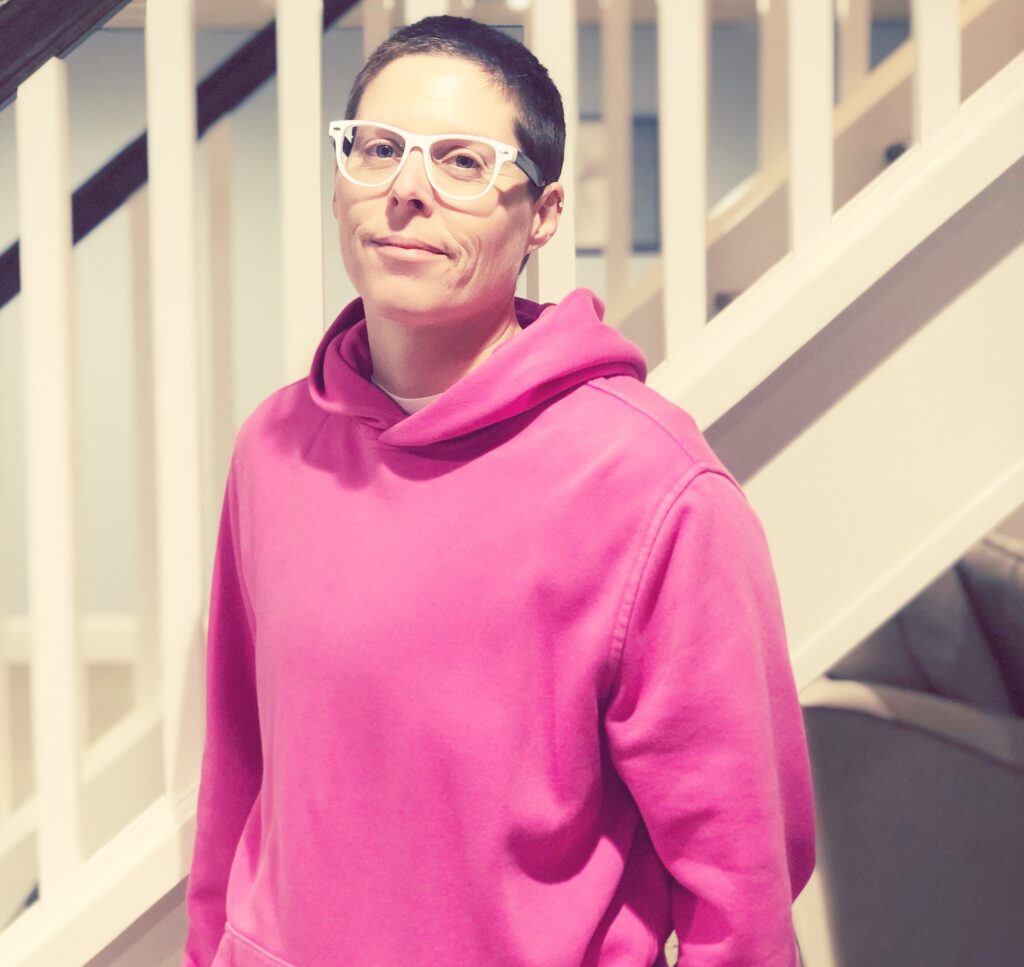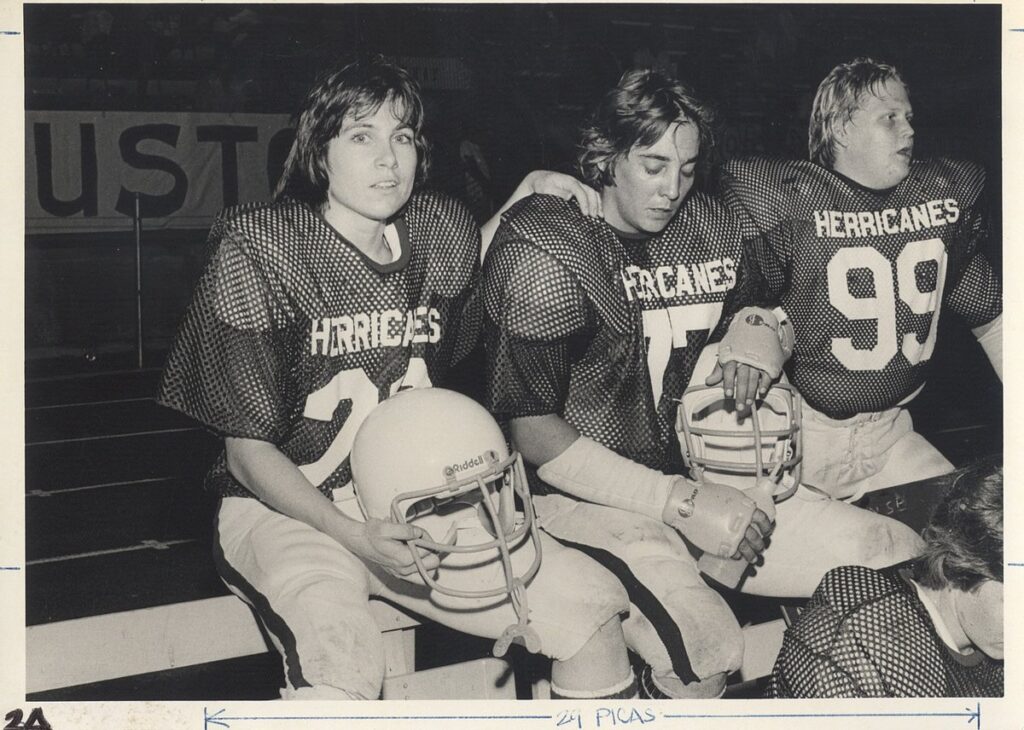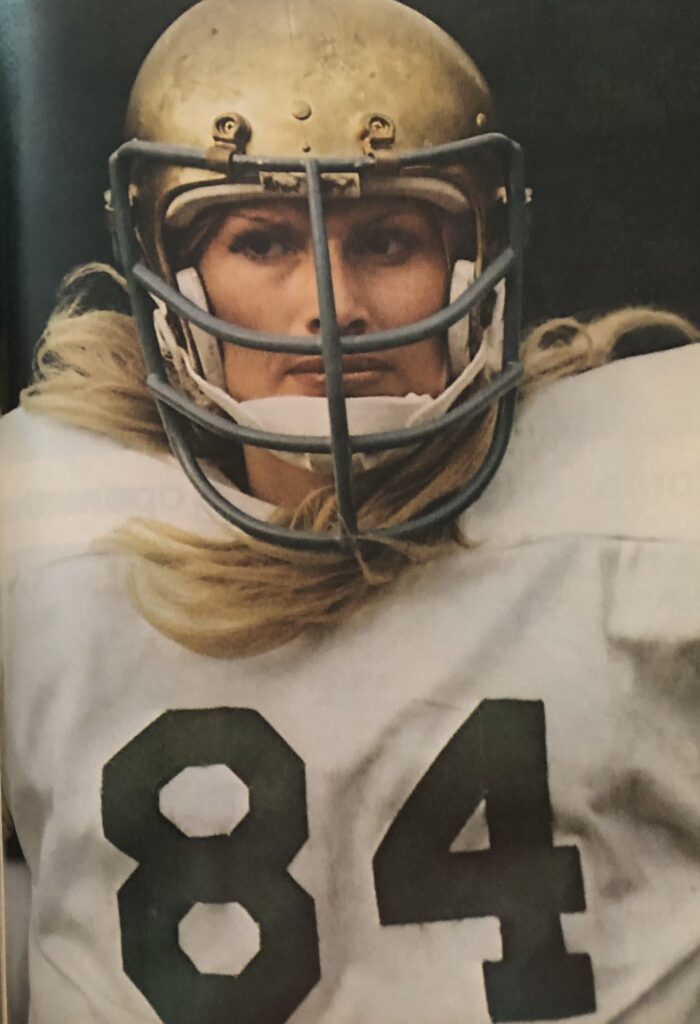The true story of America’s women football pioneers
Journalist Lyndsey D’Arcangelo has cowritten a book that charts the inspiring history of American women in football.
I did not know there had been or ever was a National Women’s Football League. For some reason, in a sports-mad nation, this fact had escaped me, which is a shame given that I have spent a couple of decades as a lesbian editor. I was, therefore, very pleased to learn that veteran sports journalist and one of my colleagues in said lesbian journalism, has co-written a book with Britni De La Cretaz — Hail Mary: The Rise and Fall of the National Women’s Football League (Bold Type Books).

This work, like all good books, tells a tale that hasn’t yet been told but should be: Women from all across the country joining teams to play a sport that had been closed to them since its invention.
With names like The Los Angeles Dandelions and the Cleveland Daredevils, these women both acknowledged their gender and meant to overcome how society viewed it on the field. These teams were populated by ordinary American women, often struggling to make ends meet let alone compete in a sport they had traditionally been denied access to. Women like Marcella Sanborn. D’Arcangelo and De La Cretaz write:
Marcella Sanborn was one of the first to try out for a new women’s football team, founded in 1967. In between raising her sixteen-year-old daughter, Claudia, and the hours she put in as a supply supervisor at the Ohio Bell Company, the thirty-nine-year-old Clevelander saw an announcement in the paper and thought—as so many women had before her—Why not? Having grown up playing football with boys from her hometown of Ury, West Virginia, Sanborn figured she was tough enough to hold her own.
Hail Mary
I’ve never been drawn to the idea of donning cleats, shoulder pads and a helmet and charging down a muddy field clutching an elliptical object made of cowhide, but this book gave me goosebumps and I felt grateful to the ton of research and interviews the authors did to preserver and bring to life a fascinating and inspiring chapter in herstory.
I caught up with D’Arcangelo to see how it all came about:

What was the lightbulb moment you thought of Hail Mary? And how did you connect with your co-writer Britni?
Britni and I met a few years ago in a Facebook group for women/LGBTQ+ sports writers. We always bounced ideas back and forth, and exchanged advice with each other. At one point in 2018, Britni was working on an article about football and asked me if I had any good recommendations for books on women in football. I said no, because they don’t exist. Britni was appalled and I told them they should write one. Their response was, you should write one with me. That’s how the idea for us to collaborate on a book project was born.

Why focus on the League?
At first, we were going to do a general account of women in football, from players to commentators to refs to coaches, etc. But the feedback we kept getting from publishers was that it was too broad. So in the middle of reworking the proposal, Britni was finishing up an article on the Toledo Troopers — which is the winningest team in women’s football history. And Britni discovered the Troopers, along with a handful of other teams, played in a league called the NWFL. They immediately messaged me and said, I think this is the book, I think this league is what we need to concentrate on.
In the book you say the Women’s Football League teams often were safe spaces for lesbians. Do you generally feel this might be why so many lesbians go into sports? Other reasons? And what about your own passion for sports?
I think sports and teams in general are safe spaces for queer folks, because being athletic for women was already subverting societal norms. And so straight women who played already felt they were bucking authority, so I think it was easier to bond with lesbian women over that. I think a lot of lesbians go into sports for that reason, but also those of us who are/feel more masculine had a way to express it that was deemed acceptable on the sports field. I know that I always felt more comfortable in my own skin when I was playing basketball, soccer, football — any sport, really — than I did anywhere else growing up and until I came out.

As you say, this is an unwritten history. But how easy or hard was it to find a publisher for it?
We have a great agent (JL Stermer at New Leaf Literary) who really championed this book. We also believed we had a topic that know one knows about and that has gone unreported, so that worked in our favor as far as pitching something new and exciting. We ended up having a handful of publishers bid on the project, so that was cool.
How did you find out a lot of this history as running parallel to queer history, e.g. that the Bluebonnets was founded in a Dallas lesbian bar in 1972?
We did extensive research for the book. Britni and I split up the teams to divide and conquer as far as tracking down players and researching the background of each team. I also wrote the history chapter. So we used a lot of information from former players themselves as well as old newspaper clippings/articles, research papers, books, etc. It was a lot of fun and highly educational for both of us. And the cool thing is, since we had divided the teams, we both got to learn about the teams’ backgrounds and about historical information from each other.
I found Betty Young’s story so moving. She grew up religious in Texas and loved “boy things” so her journey is really that of a Stonewall era queer person’s. What are some of your favorite stories in the book?
I love Rose Low’s story — just her being a first generation Chinese American and finding her place in California through sports. The entire Houston Herricanes tea m funded everything on their own and they have a great story of redemption against their biggest NWFL rival that is inspirational. Lastly, being from Buffalo, this one is special to me — Barbara Patton was a player on the LA Dandelions. She used to bring her son Marvcus to practices and games with her because she couldn’t afford childcare. Marvcus went on to play professional football himself as a linebacker for the Buffalo Bills and has said his mother was his inspiration.
Hail Mary: The Rise and Fall of the National Women’s Football League is out now in hardcover and ebook.







